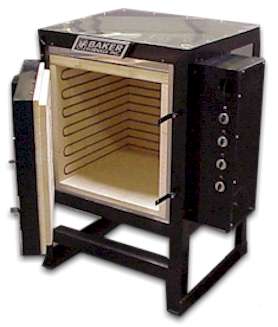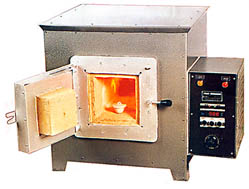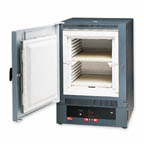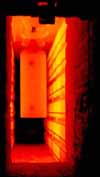| 3 편 소 성 가 공 | |||
|---|---|---|---|
|
전기저항로(electric resistance furnace)
|
|||

|

|

|

|
|
The most widely used and best known resistance furnaces are indirect-heat resistance furnaces or electric resistor furnaces. They are categorized by a combination of four factors: batch or continuous; protective atmosphere or air atmosphere; method of heat transfer; and operating temperature. The primary method of heat transfer in an electric furnace is usually a function of the operating temperature range. The three methods of heat transfer are radiation, convection, and conduction. Radiation and convection apply to all of the furnaces described. Conductive heat transfer is limited to special types of furnaces.
|
|||